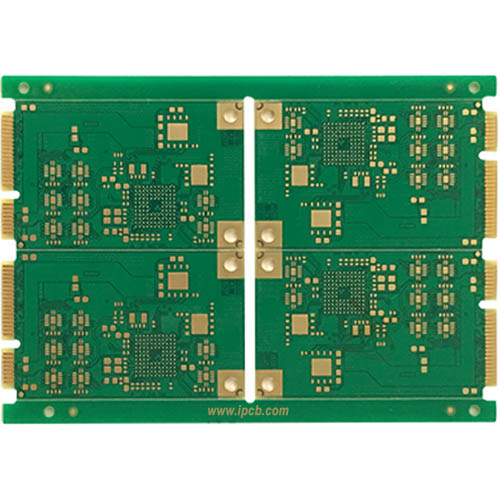1. What fields are multilayer PCB boards generally used in?
Multilayer PCB circuit board is generally used in communication equipment, medical devices, industrial control, security, automotive electronics, aviation, computer peripherals and other fields. As the "core main force" in these fields, with the continuous increase of product functions, the lines are more and more intensive, and the corresponding market requirements for board quality are also getting higher and higher, and the customer demand for medium and high TG circuit boards is constantly increasing.

2. The particularity of multilayer PCB
Ordinary PCB plates will have deformation and other problems under high temperatures, and the mechanical and electrical characteristics may also decline sharply, reducing the service life of the product. The application fields of multilayer PCB are generally located in the middle and high-end science and technology industry, which directly requires that its sheet materials have high stability, high chemical resistance, and can withstand high temperatures, high humidity, etc. Therefore, multi-layer PCB boards shall be made of at least TG150 or more boards, so as to reduce the influence of external factors and prolong the service life of the products.
3. Stability and high reliability of high TG PCB board type
TG value: TG is the highest temperature at which the steel of the plate is maintained. TG value refers to the temperature at which the amorphous polymer (including the amorphous part of the crystalline polymer) changes from the glass state to the high elastic state (rubber state). The TG value is the critical temperature at which the substrate melts from solid to rubber liquid. The TG value is directly related to the stability and reliability of PCB products. The higher the TG value is, the stronger the stability and reliability are.
4. High TG PCB board has the following advantages:
4.1. High heat resistance, which can reduce the floating of PCB pad during infrared hot melting, welding and thermal shock.
4.2. Low coefficient of thermal expansion (low CTE) can reduce the warpage caused by temperature factors, and reduce the copper fracture at the hole corner caused by thermal expansion. Especially in PCB board with eight or more layers, the performance of plated through holes is better than that of PCB boards with general TG values.
4.3. With excellent chemical resistance, the PCB multilayer board can keep its performance intact in the process of wet treatment and under the immersion of many chemical solutions.
High Tg PCB is also called PCB, When the temperature rises to a certain threshold, the substrate will change from a glass state to a rubber state. The temperature at this time is called the glass transition temperature (Tg) of the plate. In other words, Tg is the highest temperature (℃) at which the substrate maintains rigidity. That is to say, under high temperatures, common PCB substrate materials constantly produce softening, deformation, melting and other phenomena, which are also shown in the sharp decline of mechanical and electrical characteristics, thus affecting the service life of the product. Generally, the Tg plate temperature is above 130 ℃, the high Tg is generally greater than 170 ℃, and the medium Tg is generally greater than 150 ℃; Generally, PCB boards with Tg ≥ 170 ℃ are called high Tg printed boards; The Tg of the substrate is increased, and the heat resistance, moisture resistance, chemical resistance, stability resistance and other characteristics of the printed board will be improved. The higher the TG value is, the better the temperature resistance of the plate is. Especially in the lead-free process, high Tg is used more frequently; High Tg refers to high heat resistance. With the rapid development of the electronic industry, especially the electronic products represented by computers, which are developing towards high functionality and high multilayer, higher heat resistance of PCB substrate materials is required as a prerequisite. With the emergence and development of high-density installation technology represented by SMT and CMT, PCB is increasingly dependent on the support of high heat resistance of the substrate in terms of small aperture, fine wiring and thinness.
5. Tg influencing factors
5.1. Influence of PCB processing on Tg value
Sheet Tg should be controlled mainly from the following aspects of the PCB process. First, open the drying plate. The temperature should not be too high. It is better to lower the Tg value by 10 ℃. (For example, the general high Tg high-speed material is baked at 170 ℃/4h), which mainly releases the internal stress and moisture remaining in the plate, and promotes the further curing of the resin in the plate. Secondly, the board is dried after browning. After the browning board is soaked in liquid medicine in the wet process, the board absorbs a certain amount of water. If the water remains in the board, the quality of the pressing plate will be affected and the Tg value of the board will be affected. Therefore, the board must be dried after browning (120 ℃/1 hour). PP (prepreg) of the pressing plate absorbs a certain amount of water during storage. The residual water between the molecular chains of the polymer is very difficult to be discharged during hot pressing. If the pressing plate is not dehumidified, it is very easy to have defects such as plate bursting and delamination. Therefore, it will also affect the size of TG, and must be dehumidified before pressing.
5.2. Effect of water absorption on Tg
During hot pressing, the cross-linking reaction between polymers cannot be completely carried out, so there are polar groups in the plate, which are easy to absorb water and cannot truly reflect the Tg value of the plate after absorbing water. Therefore, before Tg test, the sample should be baked at 105 ℃ for 2 hours to remove the moisture from PCB board.